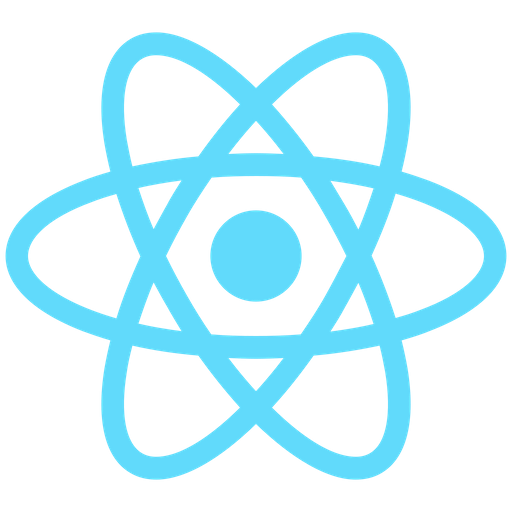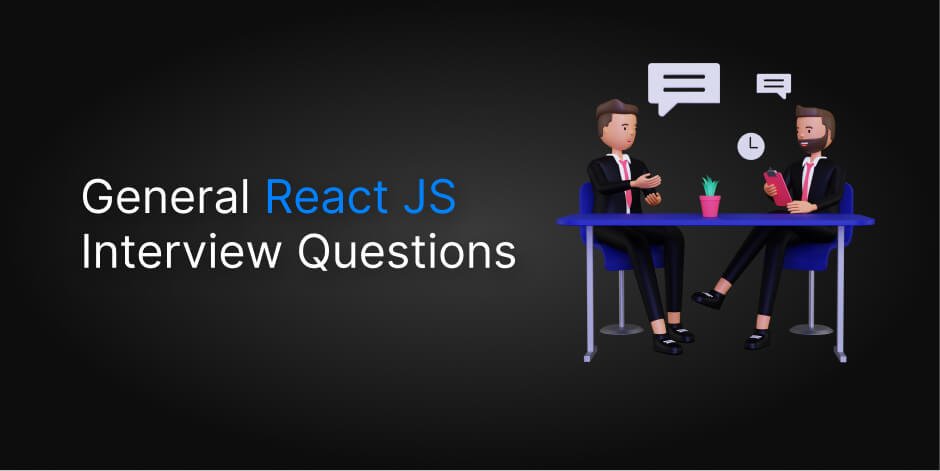We have selected all of the general React JS interview questions you should know as a beginner/intermediate in 2022. Whether you are interviewing for a hired position or not, you must know all of these questions’ answers.

These general React js interview questions cover everything from core React concepts to the practical application of certain features. To get the best results from this guide, try to answer each question before looking at the answers.
1. What is React JS?

React.js is a JavaScript library for UI development (Front-end). The library is open-source, developed by Meta (Facebook), and helps make great UI based on UI components. Its original author is John Walke, launched on May 29, 2013.
It’s a widely known library among the front-end industries for better quality web development. Besides, React offers extensions for entire application architectural support, such as Flux and React Native, beyond mere UI.
2. What are the features of React?
The React framework is quickly becoming the most popular framework among web developers. Its key features are as follows:
- JSX
- Components
- One-way Data Binding
- Virtual DOM
- Simplicity
- Performance
Learn more about the features HERE.
3. What are the Major Advantages of React JS?
Some of React’s key advantages include:
1. It improves the performance of the application.
2. It can be conveniently used on the client as well as server-side.
3. Because of JSX, code’s readability increases.
4. React is easy to integrate with other frameworks like Meteor, Angular, etc.
5. Using React, writing UI test cases becomes extremely easy.
4. What are the Major Disadvantages or Limitations of React JS?
The following are React’s limitations:
1. React is not a full-blown framework, only a library.
2. Its library is very large and takes a lot of time to understand.
3. It can be a little difficult for novice programmers to understand.
4. Coding gets complex as it uses inline templating and JSX.
5. Real DOM vs Virtual DOM
| Real DOM | Virtual DOM |
| 1. It update process happens slowly. | 1. It update process happens faster. |
| 2. HTML can be directly updated. | 2. HTML can’t be directly updated. |
| 3. Creates a new DOM if the element updates. | 3. Updates the JSX if element updates. |
| 4. The cost of DOM manipulation is high. | 4. Easy to manipulate the DOM. |
| 5. Excessive memory wastage. | 5. No memory wastage. |
6. What is JSX?
JavaScript XML is known as JSX. It is a React-specific file type that combines the expressiveness of JavaScript with HTML-like template syntax. It makes the HTML file extremely simple to comprehend. This file strengthens applications and improves their performance. Here’s an example of JSX:
render(){
return(
<div>
<h1> Hello World from UI-Lib!!</h1>
</div>
);
}7. What is the purpose of render() in React JS?
Each React component must have a render(). It returns a single React element containing the native DOM component’s representation. If more than one HTML element needs rendering, You must group them within one enclosing tag, like a form, group, div, etc. The function must need to be in a pure state. And this function must be kept pure. So, it must return the same result whenever getting a call.
8. What is the Difference Between State and Props?
The State is a component’s local state, which cannot be accessed or modified outside of the component. It is the functional equivalent of local variables. Directly in opposition, props enable components to accept data from their parent component in the form of Props, making them reusable.
9. What is an Event in React?
An event in React is a type of action that you can trigger either a user action or a system-generated event. Events include mouse clicks, web page loading, key presses, window resizing, scrolling, and other interactions.
For example:
// For class component
<button type="button" onClick={this.changeName} >Change Name</button>
// For function component
<button type="button" onClick={changeName} >Change Name</button>10. What is Redux?
The open-source Redux JavaScript library was developed by Dan Abramov and Andrew Clark. For controlling and centralizing the application state, it was developed in 2015. When creating user interfaces, frameworks like React and Angular frequently employ Redux.
The library makes it simpler to manage, predict, time-travel debug, and centralize application states.
Simply, it gives you the ability to develop easy-to-test apps that function reliably across client, server, and native platforms.
11. What are React Hooks?
React Hooks are a specific category of function for connecting function components to React state and life cycle features. It has built-in hooks. Built-in hooks like useEffect, useState, useReducer, useRef, etc. Also, it allows you to create custom hooks.
12. What are Custom Hooks?
React Hooks, as you may know, allows you to create Custom Hooks; it is simply a mechanism for reusing stateful logic. Custom Hooks, for example, allows you to set up a subscription and remember the current value. This allows you to create cleaner functional components, remove logic from functional components, and avoid code duplication. You can avoid code duplication by reusing hooks for common use cases.
Learn more about custom hooks from HERE.
13. In React, What is Context?
By enabling data to be sent down and used (consumed) in whichever component we require in our React application without the usage of props, Context is meant to share “global” data for a tree of React components. We can more easily transfer data (state) amongst our components thanks to it.
14. Element vs Component in React
A React component essentially explains what you need to see on the screen. Not surprisingly, a React element is a critical representation of some UI.
A method or class that alternately acknowledges input and returns a React component is known as a React component. Ordinarily, through JSX, that gets transpiled to a createElement invocation.
15. What is React Router?
React Router is a routing library (Standard) for React. It is a simple API with powerful features like lazy loading, dynamic route matching, and location transition handling. And it is compatible with all platforms that support React, including web, node.js servers, and React Native.
If you want to install this library into your React project, just follow the command, and that will do.
npm install – -save react-router-domParting Thoughts
These are the most common React JS interview questions. These are the general ones that are most common among companies that hire entry-level React developers. We hope these React JS interview questions help you get a little bit closer to your interview round selection. Best wishes for your upcoming job interview!



Comments are closed, but trackbacks and pingbacks are open.